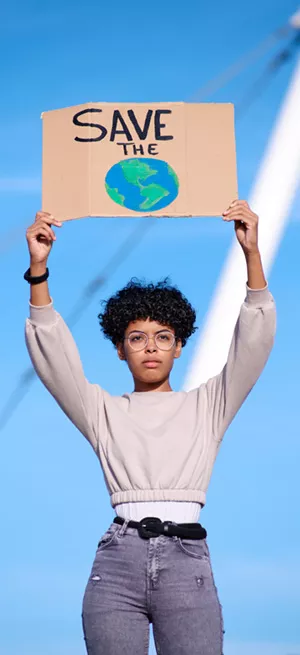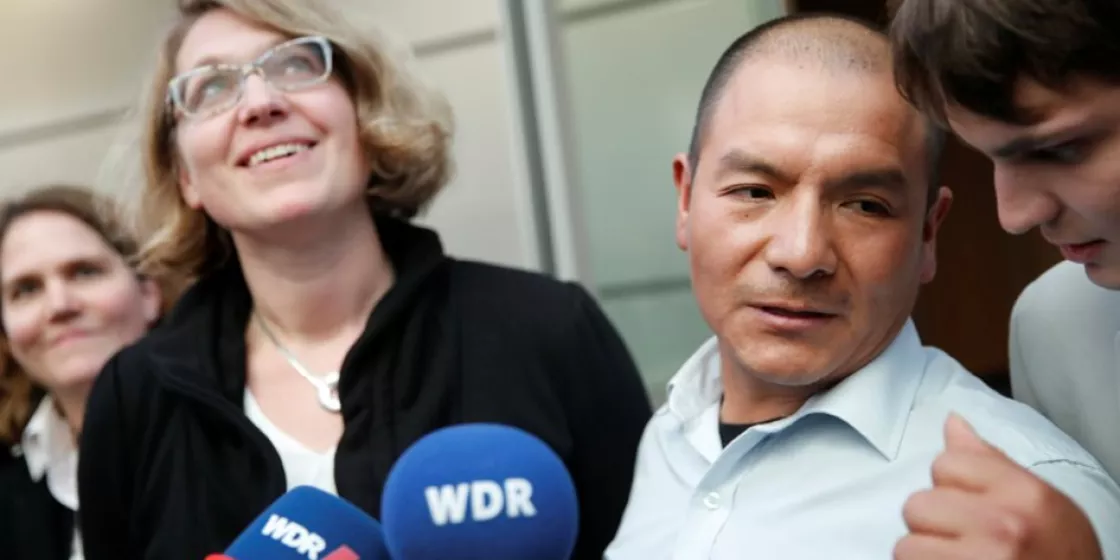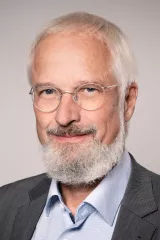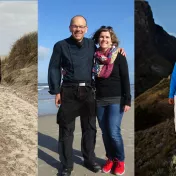"Five years ago we started a battle with an opponent that spreads in the atmosphere in the form of CO2. This opponent is a threat to the civilization on this planet that we inhabit. Five years later, I realize: It is easy to destroy the Earth, but very difficult to heal it again." - Saúl Luciano Lliuya, plaintiff against RWE from Huaraz, Peru
On November 24, 2015, Saúl Luciano Lliuya from the Andean city of Huaraz (Peru) took legal action for the protection of his environment and livelihood. He filed his civil lawsuit in a German court to hold one of the largest emitters liable for the consequences of its climate-damaging business model. The Huaraz Case broke new legal ground. By now, it has made it to the evidentiary stage and is a test case that is known globally and has a symbolic effect like no other lawsuit.
Status of the legal proceedings
On November 13, 2017, the Higher Regional Court of Hamm stated clearly that large emitters such as RWE are in principle liable for supporting people in poorer countries affected by climate change. The case thus entered the evidentiary stage. As part of this stage, the court will travel to Huaraz to gather evidence. It is the first time ever that a (German civil) court conducts an on-site visit on another continent to assess climate damage caused by a (major European) corporation. This climate suit is thus already a great milestone for global climate justice!
The on-site visit will serve to assess whether the property of the plaintiff is actually threatened by an outburst flood from glacial lake Palcacocha located above the city. If such an affectedness of the plaintiff can be proven, the next phase of the taking of evidence will serve to assess to what extent climate change and the CO2 emissions released by RWE have contributed to this danger.
Unfortunately, there is no interstate legal assistance agreement between Germany and Peru so that the court had to ask the State of Peru for permission to gather evidence in Huaraz. This procedure was lengthy and has delayed the taking of evidence. The on-site visit was to finally take place this year, but had to be further postponed due to the Covid-19 pandemic and the resulting travel restrictions.
"The proceedings stretch out like a rubber band and Covid-19 keeps the band stretched further. The on-site visit cannot be carried out until it is safe", says the plaintiff’s lawyer Dr. Roda Verheyen, summarizing the situation. However, she adds, "the fact that a German court wants to travel to Huaraz to assess the impact of climate change on Saúl Luciano’s house shows that the Higher Regional Court of Hamm treats the matter with great seriousness."
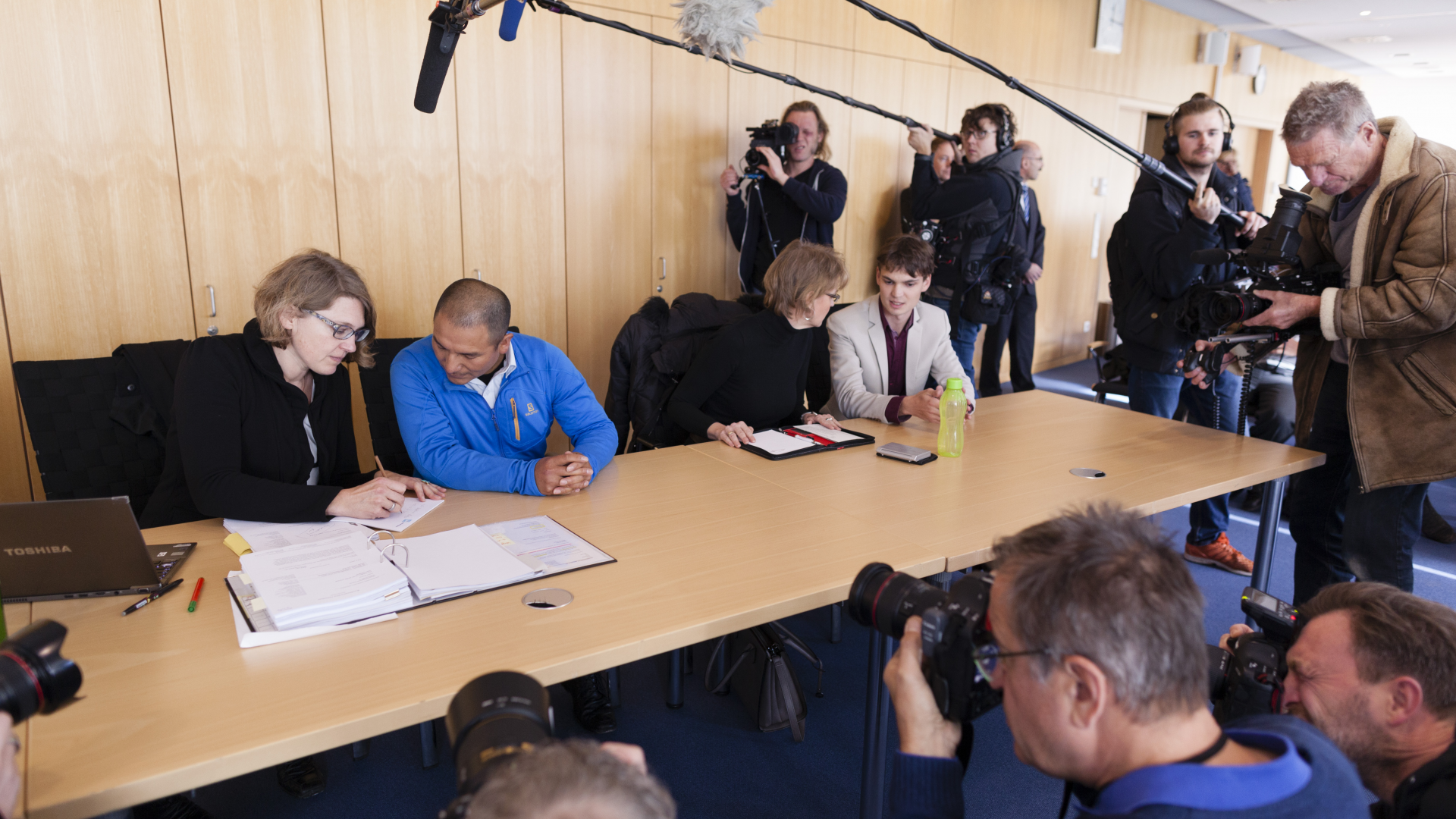
The Huaraz Case’s significance for the climate justice movement
By now, the five-year-old Huaraz Case does not go unmentioned in any debate around climate litigation. By allowing the case to progress to the evidentiary stage, the court acknowledged that a private company is in principal responsible for its share in causing climate damages. Never before had an individual brought a corporate group to court for climate change in a civil lawsuit, and to this day, the Huaraz Case remains the only climate compensatory claim worldwide to have made it to the hearing of evidence. As such, it is of great importance and receives worldwide attention.
"These proceedings are already historical from a legal point of view", emphasizes lawyer Dr. Roda Verheyen. "No other comparable climate claim worldwide has reached such an advanced stage in the proceedings up until now. No other court in the world has legally recognized that major emitters are responsible for the consequences of climate change."
What is more, the Huaraz Case has led to a new interpretation of paragraph 1004 in the German Civil Code. The 19th century claim for removal and injunction against interference with property (‘nuisance’) is usually applied in disputes amongst neighbors: if a neighbor interferes with the quiet enjoyment of ones property, either by creating smells, sounds, pollution or any other hazard that extends past the boundaries of the property, the affected party may make a claim in nuisance. In the Huaraz Case, the Higher Regional Court of Hamm decided that climate change with its cross-border effects has created a global neighborly relationship, so that this paragraph also applies in this case. Similar paragraphs exist in many other countries. The Huaraz Case thus increases the pressure on emission-intensive companies - but also on politicians to address the need for regulation in this area more seriously.
Dr. Roda Verheyen describes the significance of Saúl Luciano Lliuya's lawsuit in the context of the growing climate litigation movement as follows: "The first wave of climate lawsuits dealt with climate impacts as part of the approval of roads, mines, etc., the second wave was against states for more ambitious climate protection. Both waves continue to be strong. But what we are seeing now and what Saúl Luciano's lawsuit makes clear is that there is also responsibility on the part of companies for the consequences of decades of money-making with a business model that significantly affects the rights of others."
Climate and glacier scientist Prof. Dr. Christian Huggel, too, confirms the significance of the lawsuit against RWE: "The case is rightly described internationally as a milestone in the climate debate in general and climate litigation in particular. In addition to sending a strong signal to the fossil fuel industry, the case accelerates the complex and multidimensional debate on how we deal with the responsibility for the impacts of climate change, from the local to the global level."
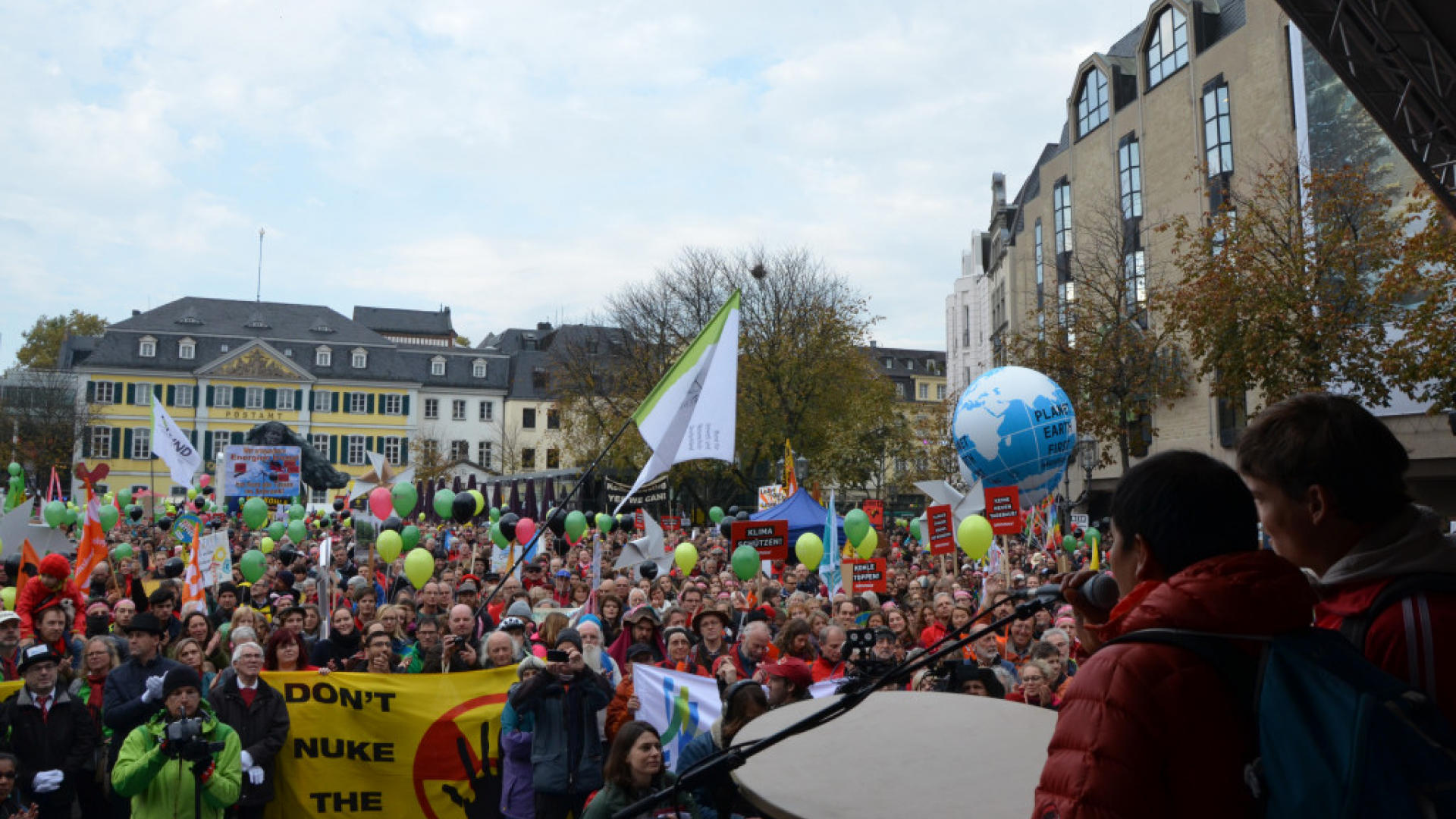
The role of law in the climate crisis
Thanks to the Paris Agreement (PA) and the rapid evolvement of climate science, the role of law in mitigating the climate crisis has significantly grown in importance over the last five years. Among other things, the PA and the intensifying climate crisis have shifted the focus more to the national level. As part of the international climate regime, Parties to the UNFCCC have started formulating nationally determined contributions (NDCS) and national adaptation plans (NAPs) after the adoption of the PA. This change also affects the role that law can play. "The UNFCCC and the Paris Agreement remain important," says Dr. Roda Verheyen. "But now it is a matter of implementation in individual states, in regions. Here, courts can play a significant role in increasing pressure. This is an important shift because international law alone is too imprecise, not directly enforceable and leaves the states with too many loopholes."
Dr. Will Frank, climate law expert and honorary advisor for Germanwatch in the Huaraz Case, emphasizes: "Law plays an important role in the fight against the climate catastrophe and in dealing with its consequences. It is a question of justice that those who caused climate change assume responsibility for climate impacts. It is also a question of justice that those who are suffering from the consequences of climate change get support. However, the significance of the Huaraz Case goes even further. It is also an important building block for climate justice in that it points to the responsibility of polluting countries to provide refuge for people who lose their homes due to climate impacts."
The Huaraz Case has also played an important role in the international climate negotiations under the UNFCCC over the past five years. Climate lawsuits like this one make it very clear that countless people are already suffering because of climate risks, damages and losses. It is a question of justice that those who have caused climate change assume responsibility for its impacts (“polluter pays principle”). This responsibility is reflected, among others, in the duty of industrialized countries to provide international climate finance for situations such as the one that Saúl Luciano Lliuya and the citizens of Huaraz are facing. The provision of sufficient international finance for climate-related “Loss & Damage” (term used under the UNFCCC) is a goal towards which Germanwatch has been working intensively in the climate negotiations for years. Saúl Luciano Lliuya's lawsuit and his presence at several world climate summits (COPs) have been instrumental in driving this work forward.
The importance of climate science for climate lawsuits - and vice versa
"We already crossed the biggest hurdle in this case, which was deciding whether climate damages could give rise to corporate liability.” says lawyer Dr. Roda Verheyen “From now on, we have to look at the facts and science."
As the first climate compensatory claim worldwide to enter the evidentiary stage, it is a particular challenge for the court and the scientists involved to handle very complex questions. "The case poses a great challenge to science because we have to bring together different scientific disciplines, some of which still do not cooperate sufficiently", explains Prof. Dr. Christian Huggel. "We need a more comprehensive understanding of the interactions between humans, the climate system, ecosystems, the repercussions on society and how society responds to them."
Dr. Friederike Otto is a co-founder and leading expert of attribution science, which investigates the connections between extreme weather events and climate change. She is convinced of the great significance of the Huaraz Case and the contribution of attribution science to its success: "Attribution science can help to improve the scientific causal chain for climate lawsuits. In the case of Luciano Lliuya against RWE, however, the causal chain is very clear. My colleagues were able to clearly attribute the melting of the glacier that feeds the Palcacocha Lagoon above Huaraz to climate change. If this scientific evidence had been available when the lawsuit was filed, it would have improved the burden of proof from the outset. The lawsuit filed by a Peruvian farmer against RWE is particularly powerful in terms of climate justice. The legal action offers the affected person, who would otherwise have no voice and no power, one of the few opportunities to defend himself and initiate change. It is only a question of time until there will be successful lawsuits."
Of course, financial aspects always play a role as well. In the Huaraz Case, the Foundation for Sustainability bears the costs of the legal and court fees, and of the expensive expert opinions that are being produced during the taking of evidence - thus helping to ensure that these important questions in climate science can finally be addressed.
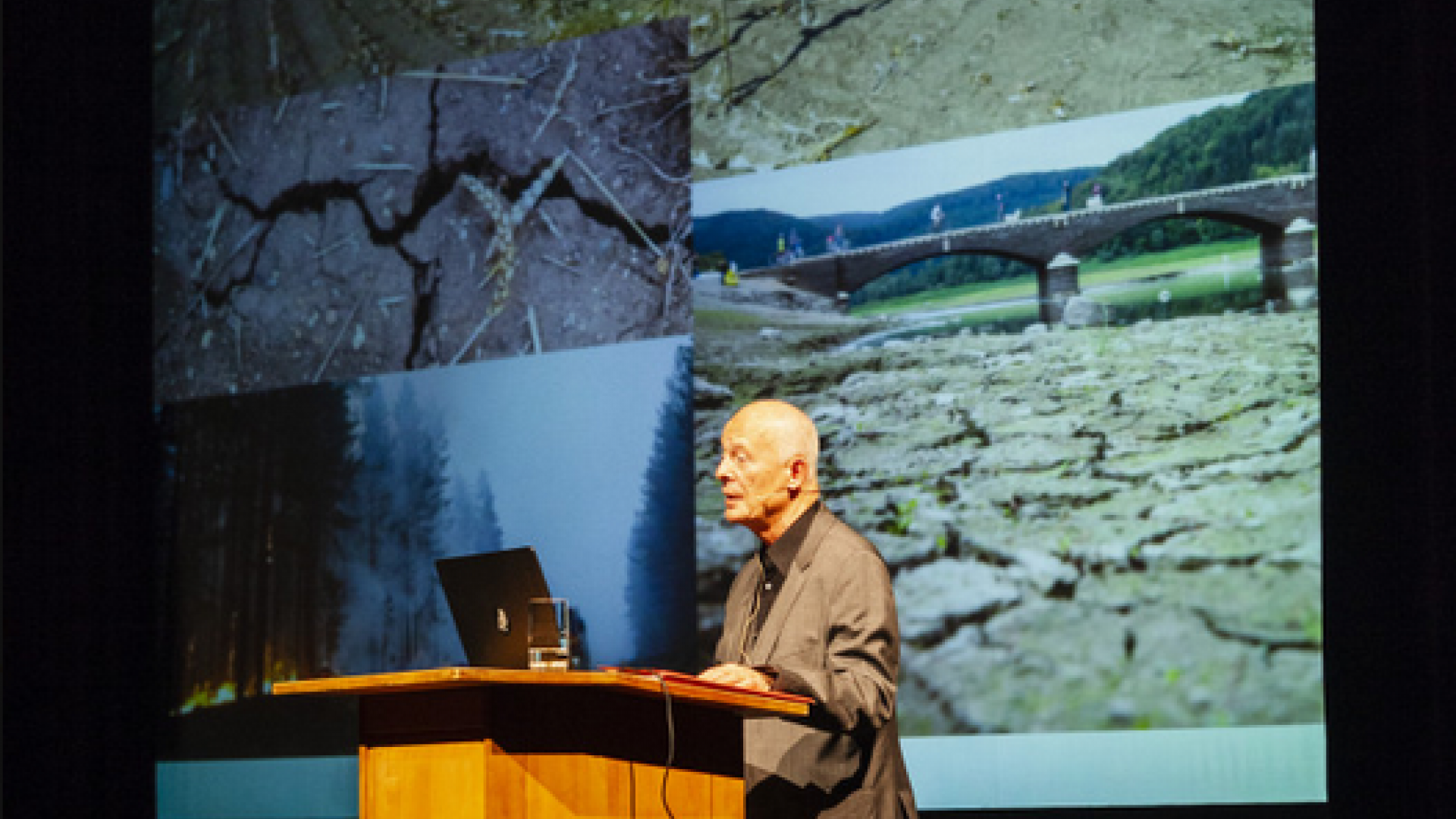
Climate lawsuits create incentives for emission-intensive companies to change their business model
"The test case shows where the journey is headed", says Prof. Dr. Mojib Latif, expert in ocean circulation, climate dynamics and maritime meteorology. "Anyone who places excessive burden on the environment will be held responsible. Only sustainable business models will be profitable in the future."
For decades, Germanwatch has been working in various projects towards the goal that only sustainable business models may be profitable. Considerable progress was made in recent months and years, also thanks to climate lawsuits such as Saúl Luciano Lliuya’s. The establishment of the Sustainable Finance Advisory Board of the German government in summer 2019 is a good sign. Christoph Bals, political director of Germanwatch, is a member of the advisory board and contributes, among other things, reflections on the implications of the Huaraz Case for companies' reporting, due diligence and reserve requirements. In his opinion, investors, too, would be well advised to consider the risk of climate litigation when making their investment decisions.
"Climate lawsuits could be a major systemic lever for changing the business model of emission-intensive companies - if they take the growing litigation risk seriously - and thus make a fundamental contribution to climate protection", says Dr. Friederike Otto.
Developments in Huaraz and in Peru
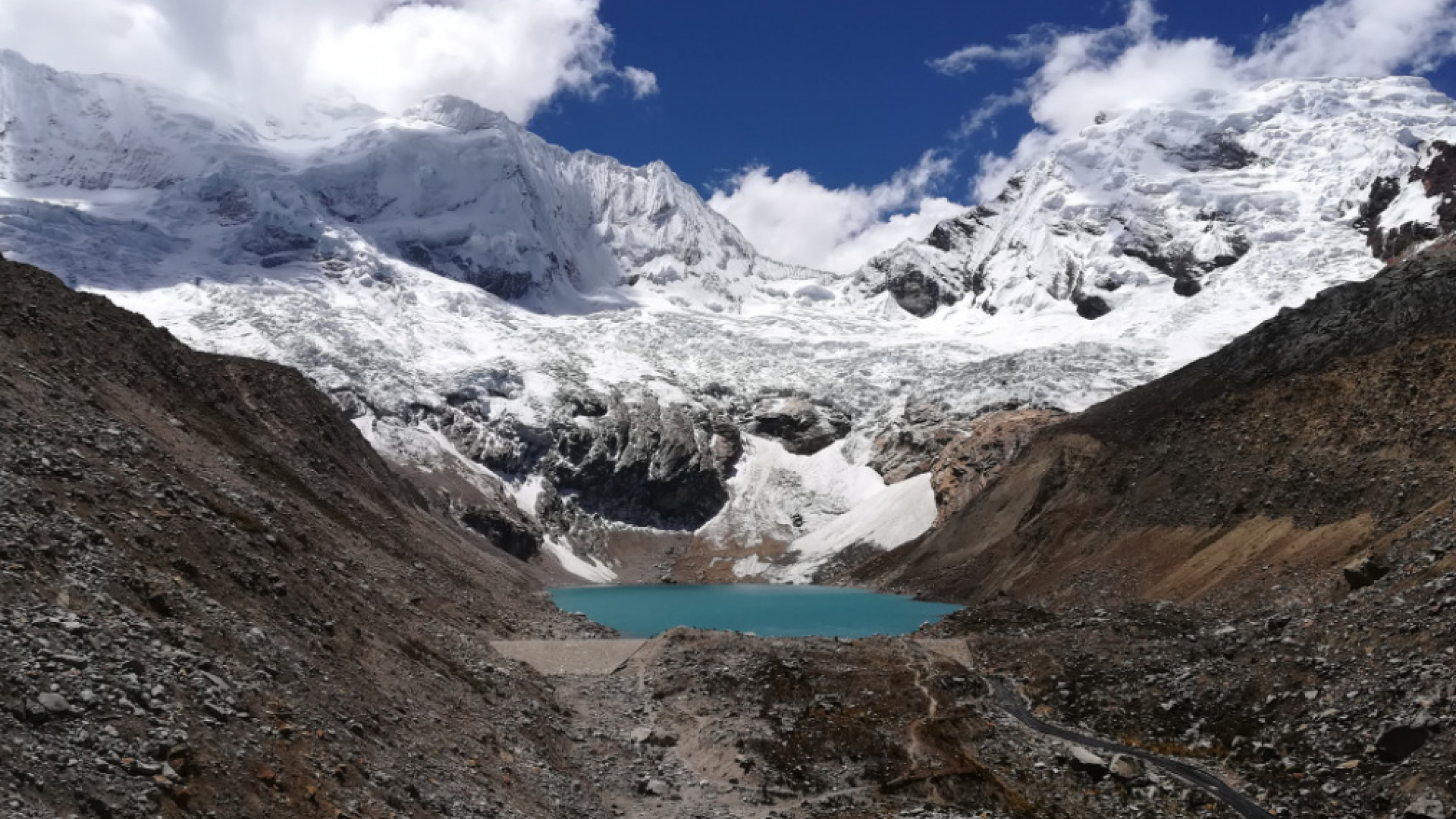
Since the Huaraz Case was filed five years ago, many things have changed in the Peruvian High Andes. At that time, it was still very difficult to reach the dangerous glacial lake Palcacocha. The only way was to walk on a small path with an ascent of more than 1000 meters in altitude. Since then, the local authorities have built a road to Palcacocha - the lake can now be reached in about two hours from the city of Huaraz by off-road vehicles. An early warning system is finally being installed at the lake in order to warn the population and thus facilitate evacuation in case of a tidal wave. The guards, who monitor the lake 24 hours a day, are now better connected with the outside world: Far away from any mobile phone signal, they used to only have a radio phone for communication, Palcacocha is now equipped with a Wi-Fi connection. The authorities have installed a camera at the lake. Theoretically, the population can use it to observe Palcacocha via livestream, but in practice there are often technical problems with this.
Another important goal of the plaintiff Saúl Luciano Lliuya is to raise awareness of the climate issue in Peru. The dramatic extent of the melting of glaciers is visible to everyone in his region, but some lack knowledge of the scientific context. Especially in the agricultural sector, it is a challenge for many to adapt to the changing climate. In order to address these issues, Saúl Luciano Lliuya has founded an NGO called Wayintsik with local companions - the name means "our house" in Quechua. The NGO supports educational projects on climate change and adaptation in local communities.
The climate debate is also progressing at a national level in Peru. In early 2018, Peru was one of the first countries in South America to adopt a national climate law. This provides state authorities with new instruments for climate protection and adaptation to climate change at various levels.
The Foundation for Sustainability provides the funds for court, lawyer and expert opinion costs. It continues to call for donations for the Huaraz Case in order to remain able to pay on time in the future.
Germanwatch is active in an advisory role with its expertise on climate litigation.
